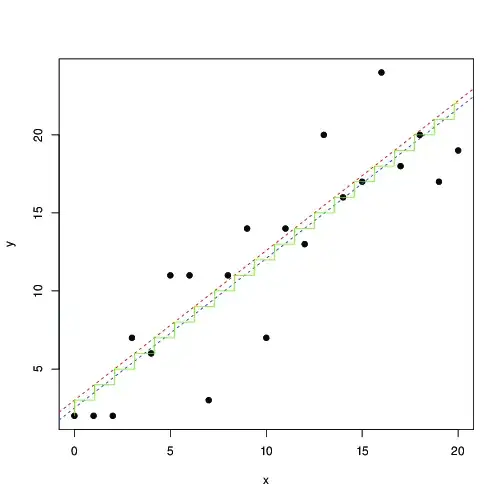In general, you wouldn't necessarily expect one way ANOVA and the Kruskal-Wallis to be similar, sometimes they can give quite different p-values. See here for a little partial motivation for why you might expect a difference. [When samples are reasonably normal-looking and with means not too many standard errors apart, they often tend to give similar p-values. Outside that, they frequently don't.]
However, in this case the reason is more prosaic: Your Kruskal-Wallis p-value is wrong.
Here's a summary of results in R (details below).
p-value
Welch t-test: 0.001287
Equal-var. t-test: 8.552e-05
One way anova: 8.55e-05
Wilcoxon test: 0.004847
Kruskal-Wallis: 0.003761
(Neither of the last two p-values are exact; if they were, you'd get the same p-value for the two-group comparison.)
Your problem is you're treating the second group's data as a factor (see the end of this answer).
Here's what I get in R with your data:
frh <- data.frame(group1 = c(103.56, 103.32, 103.32, 104.27, 103.56, 103.8),
group2 = c( 97.16, 97.16, 96.69, 98.58, 90.76, 97.64))
# strip chart:

# Welch t-test:
> with(frh,t.test(group1,group2))
Welch Two Sample t-test
data: group1 and group2
t = 6.3316, df = 5.163, p-value = 0.001287
alternative hypothesis: true difference in means is not equal to 0
95 percent confidence interval:
4.368147 10.245186
sample estimates:
mean of x mean of y
103.63833 96.33167
$\,$
# equal-variance t-test:
> with(frh,t.test(group1,group2,var.equal=TRUE))
Two Sample t-test
data: group1 and group2
t = 6.3316, df = 10, p-value = 8.552e-05
alternative hypothesis: true difference in means is not equal to 0
95 percent confidence interval:
4.735411 9.877922
sample estimates:
mean of x mean of y
103.63833 96.33167
$\,$
#one way anova:
summary(aov(values~ind,stack(frh)))
Df Sum Sq Mean Sq F value Pr(>F)
ind 1 160.16 160.2 40.09 8.55e-05 ***
Residuals 10 39.95 4.0
$\,$
# Wilcoxon-Mann-Whitney:
> with(frh,wilcox.test(group1,group2))
Wilcoxon rank sum test with continuity correction
data: group1 and group2
W = 36, p-value = 0.004847
alternative hypothesis: true location shift is not equal to 0
Warning message:
In wilcox.test.default(group1, group2) :
cannot compute exact p-value with ties
$\,$
# Kruskal-Wallis test:
> kruskal.test(frh)
Kruskal-Wallis rank sum test
data: frh
Kruskal-Wallis chi-squared = 8.3958, df = 1, p-value = 0.003761
Those are all about as consistent with each other as I would expect on that data.
Now, here's how to get what you got for the Kruskal-Wallis:
with(frh,kruskal.test(group1,group2))
Kruskal-Wallis rank sum test
data: group1 and group2
Kruskal-Wallis chi-squared = 4.3939, df = 4, p-value = 0.3553
The problem is, if you're getting this, you're using it wrong. That's not how the function works - group2 is being treated as a factor defining different groups for data in group1.
So the main reason the Kruskal Wallis isn't giving you a roughly similar p-value to ANOVA is you didn't call it correctly.
